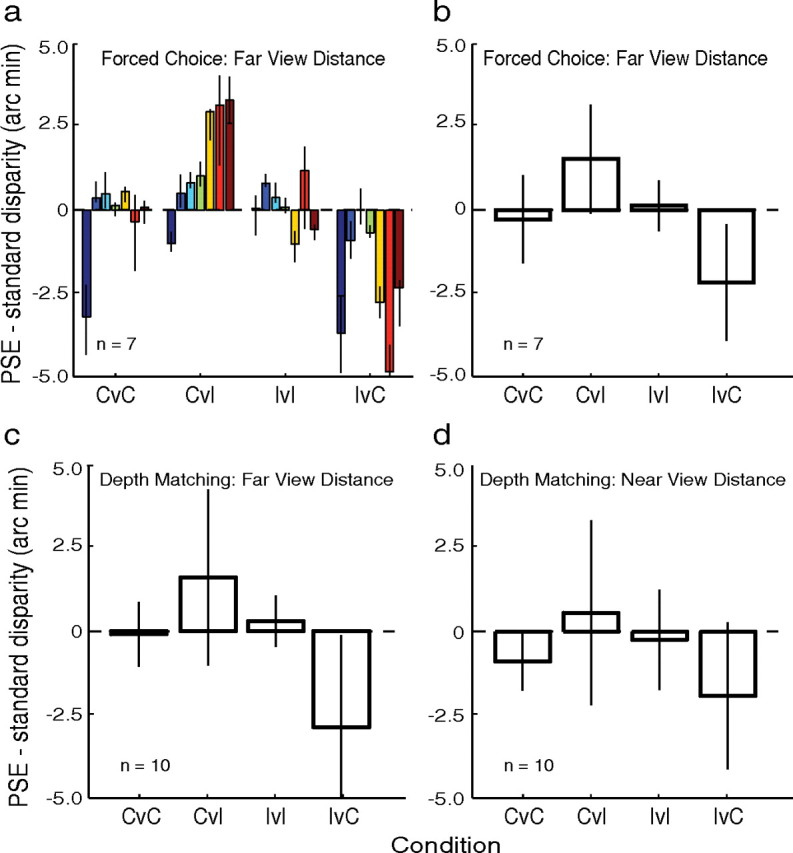Figure 6.

Results from experiments 2 and 3. a, Effect of contour shape for the seven observers in experiment 2. The abscissa represents the four stimulus pairings: consistent–consistent (CvC), consistent–inconsistent (CvI), inconsistent–inconsistent (IvI), and inconsistent–consistent (IvC). The first member of each pair is the standard stimulus; the second is the comparison. The ordinate represents the disparity of the comparison stimulus that on average yielded the same perceived depth of the standard (the PSE) minus the disparity of the standard. Error bars represent 95% confidence intervals. The dashed horizontal lines through zero represent the expected data if region convexity did not affect perceived depth. b, Data from experiment 2 averaged across observers. The abscissa and ordinate are the same as in a. To perceive depth separation as the same, observers needed more disparity in inconsistent comparison stimuli than in consistent standard stimuli. The reverse was true for consistent comparisons and inconsistent standards. Error bars represent 1 SD of the group mean. c, Results of experiment 3 with a viewing distance of 325 cm. The abscissa and ordinate are the same as in b. Data are averaged across observers. d, Results of experiment 3 with a viewing distance of 85 cm. Data are averaged across observers.
